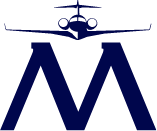“Safety is our number one priority!”—a phrase often heard in aviation. But what does it truly mean?
At Magellan Jets, safety isn’t just a promise; it’s an unwavering commitment informing everything we do. Every private aviation provider will claim to prioritize safety, but how do you distinguish those who simply say it from those who live it?
Private aviation has evolved significantly, with advancements in technology, training, and risk management making air travel safer than ever. But not all providers uphold the same rigorous standards. If you’re trusting an aviation company with your life, shouldn’t you know exactly what their safety measures entail?
This guide breaks down the key components of a strong safety culture in private aviation, helping you make informed decisions when selecting a provider
What You Need to Know About Private Aviation Safety
Understanding Safety Management Systems (SMS)
A Safety Management System (SMS) is the backbone of aviation safety. It’s a proactive, structured approach that helps operators identify, assess, and mitigate risks before they become hazards. While brokers are not mandated to implement a Safety Management System, we choose to do so. By voluntarily adopting an SMS, we proactively reinforce a robust safety culture that not only identifies and assesses risks but also actively mitigates them, underscoring our commitment to excellence and the well-being of our Private Clients.
Not all Safety Management Systems are created equal. A well-executed SMS isn’t just about having policies in place—it’s about fostering a culture where safety is ingrained at every level, from executives to pilots to ground crews. When evaluating a private aviation provider, it’s critical to ask:
- Do they have a structured SMS that meets or exceeds FAA and international safety standards?
- How do they continuously improve and evolve their safety protocols?
- Are safety reports and risk assessments actively reviewed and acted upon?
At Magellan Jets, we go beyond industry requirements, ensuring that every operator in our network meets the highest safety standards, implements real-time risk management, and maintains a proactive rather than reactive approach to safety.
The Four Pillars of Private Aviation Safety
The International Civil Aviation Organization(ICAO) defines a SMS through four fundamental pillars, ensuring that safety is not just a checklist but a deeply integrated system.
1. Safety Policy and Objectives
A true safety-first approach starts at the top. Leadership must set clear objectives, enforce accountability, and create an environment where safety is a shared responsibility. A high-quality SMS will include:
- Executive Commitment: Leadership actively supports and invests in safety initiatives.
- Defined Roles & Responsibilities: Every team member, from pilots to flight dispatchers, understands their role in maintaining safety.
- Emergency Preparedness: Robust response plans ensure quick, effective action in unexpected situations.
- Comprehensive Documentation: A well-documented SMS allows for transparency, consistency, and ongoing improvement.
At Magellan Jets, we work exclusively with operators whose leadership demonstrates an unshakable commitment to safety. The Magellan Jets Preferred Network (MJPN) represents the culmination of our meticulous selection process for choosing outstanding partners in the aviation industry. Among the 2,500+ operators in the United States, Magellan Jets collaborates with approximately 100, ensuring that each meets our uncompromising standards for safety, quality, and communication.
2. Safety Risk Management
Risk management is the heart of aviation safety. The goal is to proactively identify potential hazards before they pose a threat. Operators should employ:
- Risk Assessments: Continuously evaluating every flight’s unique risk based on weather, aircraft condition, and crew readiness.
- Data-Driven Safety Monitoring: Utilizing real-time analytics to detect and address safety concerns before they escalate.
- ASAP (Aviation Safety Action Program): Encouraging pilots and crew members to report safety concerns without fear of reprisal.
Safety isn’t just about reacting to issues. It’s about preventing them in the first place. At Magellan Jets, we hold our partners to this standard, ensuring that every flight undergoes meticulous risk assessment before takeoff.
3. Safety Assurance
Safety assurance certifies that safety policies are effective and continuously improving. It involves:
- Routine Safety Audits: Frequent evaluations ensure compliance with the highest industry standards.
- Real-time Flight Data Monitoring: Advanced monitoring systems track aircraft performance, pilot actions, and environmental conditions.
- Post-flight Analysis: Reviewing flight data to identify areas for improvement and prevent future issues.
- Culture of Continuous Improvement: Safety isn’t static. Leading operators actively refine their protocols based on insights from every flight.
Magellan Jets partners exclusively with operators who embrace this principle, ensuring that safety is a journey, not a destination.
4. Safety Promotion
A culture of safety requires constant reinforcement through training, communication, and recognition. Good operators should:
- Conduct Regular Training: Pilots and crew members must participate in ongoing safety training beyond regulatory minimums.
- Encourage Open Communication: Employees should feel empowered to report safety concerns.
- Recognize Safety Leaders: Rewarding individuals who go above and beyond in maintaining high safety standards strengthens the safety culture.
- Engage in Industry-wide Safety Initiatives: Staying ahead of best practices ensures a proactive approach to emerging risks.
At Magellan Jets, we expect every operator in our network to foster a safety-first mindset, ensuring that training and communication remain at the forefront of operations.
Setting the Standard: How Magellan Jets Ensures Your Safety
Many private aviation companies claim safety is their priority, but at Magellan Jets, we have the credentials and track record to back it up.
- WYVERN Wingman Certified Broker: Wyvern is the leader in aviation risk management, safety, quality, and training. To receive this coveted certification, Magellan Jets was vetted by an experienced, professional, and internationally accredited aviation safety auditor, ensuring our policies, processes, and procedures conform to WYVERN’s stringent ethical standards.
- Real-time Operator Audits: We continuously evaluate our partners to ensure they meet
evolving safety standards. - Experienced & Vetted Pilots: We run a Magellan Jets Safety Assurance Report before every flight, meaning that every crew member undergoes rigorous training and background checks.
- Advanced Aircraft Technology: We prioritize modern, well-maintained aircraft equipped with the latest safety systems.
- The Magellan Jets Preferred Network: We meticulously select partners to uphold the highest safety and quality standards.
Additionally, our Chief Operating Officer and CEO, Matthew Harris, served as Chairman of the Air Charter Safety Foundation (ACSF), reinforcing Magellan Jets’ leadership in advancing safety initiatives across the industry.
Beyond Compliance: Why Proactive Safety Matters
Compliance with regulations is essential, but true safety leadership requires going beyond the minimum. Some private aviation companies focus on meeting basic requirements, while others, like Magellan Jets, are dedicated to exceeding them.
What Sets Us Apart?
- Uncompromising Standards: We never cut corners when it comes to safety.
- Custom Safety Protocols: Every flight is tailored to our Private Clients’ needs while maintaining the highest safety measures.
- Transparency & Accountability: We believe in clear, honest communication about safety practices.
When choosing a private aviation provider, look beyond the sales pitch. Ask about their SMS, pilot training programs, aircraft maintenance protocols, and real-time risk management strategies. At Magellan Jets, we welcome these conversations.
Fly with Confidence
When you choose Magellan Jets, you’re not just booking a flight. You’re investing in peace of mind.
Your safety isn’t just a priority. It’s our foundation. Every flight, every crew member, and every aircraft in our network is held to uncompromising standards, ensuring you travel with absolute confidence.
Want to Learn More?
Connect with a Private Aviation Advisor today to discuss how we can provide you with the safest, most reliable private travel solutions tailored to your needs.
Your journey is important. Your safety is paramount. And at Magellan Jets, we take both personally.




















